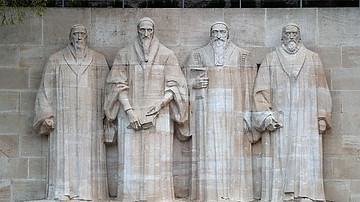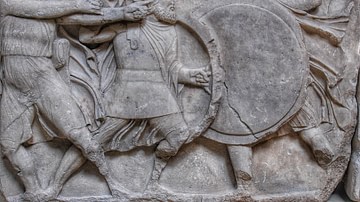Review

| Rating: | |
|---|---|
| Title: | Music in Golden-Age Florence, 1250–1750: From the Priorate of the Guilds to the End of the Medici Grand Duchy |
| Author: | Anthony M. Cummings |
| Audience: | University |
| Difficulty: | Hard |
| Publisher: | University of Chicago Press |
| Published: | 2023 |
| Pages: | 456 |
This book is recommended to academics and musicologists interested in the music of this time period and place. The book is about music in Florence, Italy from 1250-1750, its intended audience ranges from amateur historians to professional musicologists and musicians. The title's blend of historical and musicological information makes it particularly outstanding.
As the title indicates, this book presents the music composed and performed in Florence during its most prolific and productive time: from the Middle Ages to the end of the Baroque. This 500-year time capsule saw Florence as a politically and ecclesiastically dominant city on the Italian peninsula and musically and culturally significant within the European landscape. In the preface, the author, Anthony Cummings, details his approach and presentation of the information within the book, attempting to satisfy the interests of both music amateurs and professional musicologists with his approach and presentation.
Divided into four major sections containing 19 chapters and a conclusion, 500 years of historical and musical history are discussed and intertwined. The first section examines late medieval Florence from roughly 1250 to 1450, known as the Duecento and Trecento periods. Both secular and religious music are covered, along with various buildings and churches within Florence and their influences and important composers. Francesco Landini (d. 1397) is generally considered the major Florentine composer of this time. Influences from French music along with the rise of liturgical polyphony round out this first section. The second section focuses on the politics and music of the early Renaissance known as the Quattrocento period, when the Medici family began its rise to power. Ecclesiastical institutions, sacred music innovations, the Florentine carnival, music and patrons in the Medici establishment, and the Medici in exile round out the topics in this section. The third section discusses the late fourteenth and fifteenth centuries known as the Cinquecento period, describing the rise of the madrigal, the Medici family’s influence, and ties to the papacy, the chanson, the lauda, sacred music and the major musical buildings and composers of the Reformation and Counter-Reformation, and finally a chapter on Medici pageantry. The fourth section covers the Baroque time, roughly 1600 to 1750. The rise of opera and monody along with the influences and personalities that changed musical style from a focus on musical extravagance to a focus on the text and words created a widespread movement across the entire Europe. Other topics discussed include religious and dynastic ritual music, devotional and convivial uses of music, and the pan-Italian and pan-European phases of growth within the operatic medium. The conclusion provides a concise summary of both musical and political Florence during these 500 years.
Anthony Cummings is Professor of Music at Lafayette College who specializes in historical musicology. Cummings has taken on a challenging subject and presented it in a way that tries to balance both general and extremely complex political, ecclesiastical, and musicological information. As a musicologist, I appreciate the level of detail provided in the musical examples and their descriptions; I don’t know whether this type of information can be digested by the amateur reader or historian. I also appreciate how the author has interwoven historical information and musicological descriptions, as well as various personages and composers of importance. The numerous black-and-white images and photographs, along with the color plates, help to balance out the textual and musical examples. Overall, while the attempt by the author is commendable in relation to writing for two different types of audiences, I find the book will probably be more amenable to academics and musicologists than the general public. Given the author’s background, this is probably a successful strategy in the long run.
About the Reviewer
Cite This Work
APA Style
Eden, B. L. (2024, August 23). Music in Golden-Age Florence, 1250–1750: From the Priorate of the Guilds to the End of the Medici Grand Duchy. World History Encyclopedia. Retrieved from https://www.worldhistory.org/review/469/music-in-golden-age-florence-1250-1750-from-the-pr/
Chicago Style
Eden, Bradford Lee. "Music in Golden-Age Florence, 1250–1750: From the Priorate of the Guilds to the End of the Medici Grand Duchy." World History Encyclopedia. Last modified August 23, 2024. https://www.worldhistory.org/review/469/music-in-golden-age-florence-1250-1750-from-the-pr/.
MLA Style
Eden, Bradford Lee. "Music in Golden-Age Florence, 1250–1750: From the Priorate of the Guilds to the End of the Medici Grand Duchy." World History Encyclopedia. World History Encyclopedia, 23 Aug 2024, https://www.worldhistory.org/review/469/music-in-golden-age-florence-1250-1750-from-the-pr/. Web. 24 Apr 2025.




